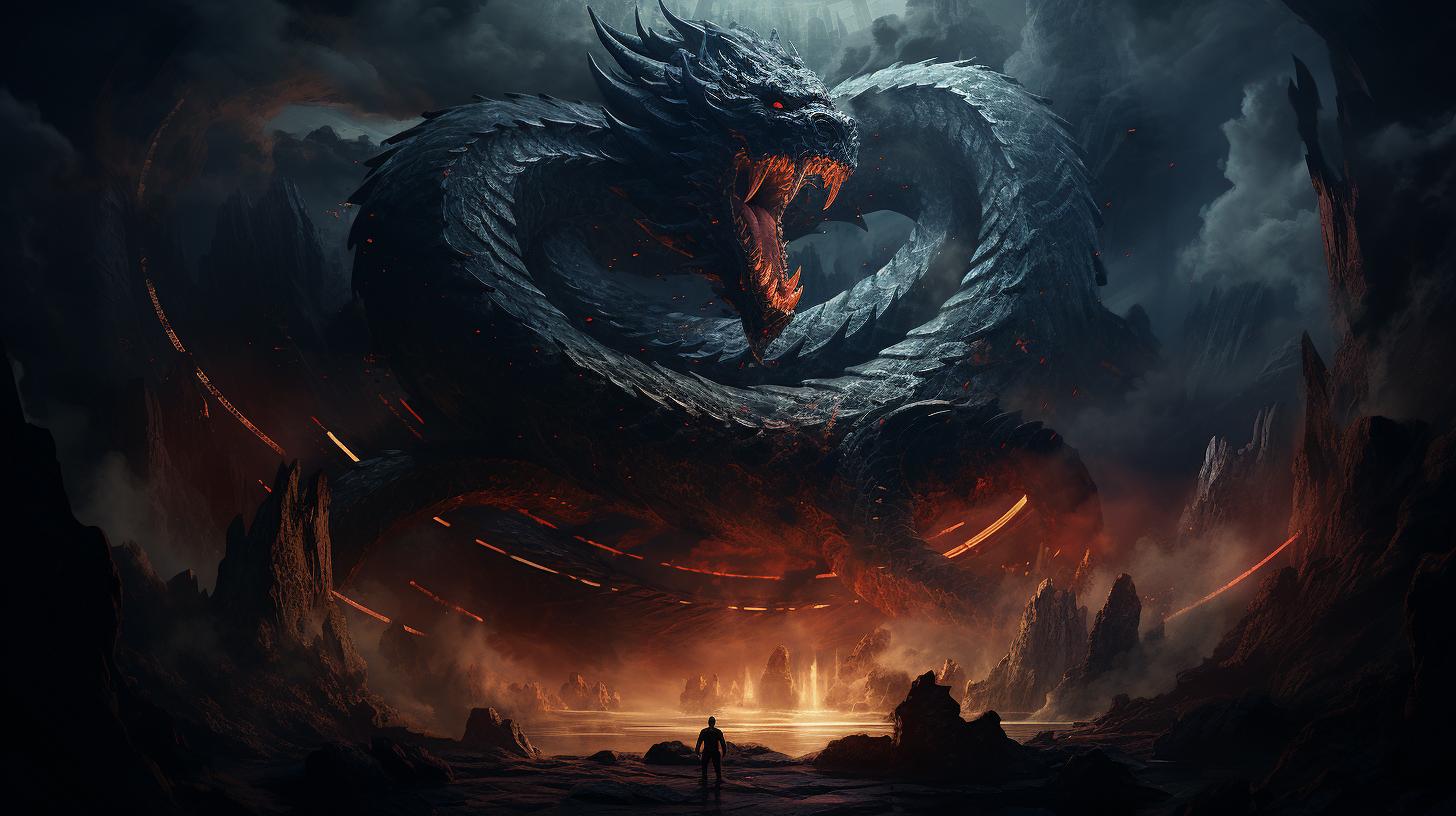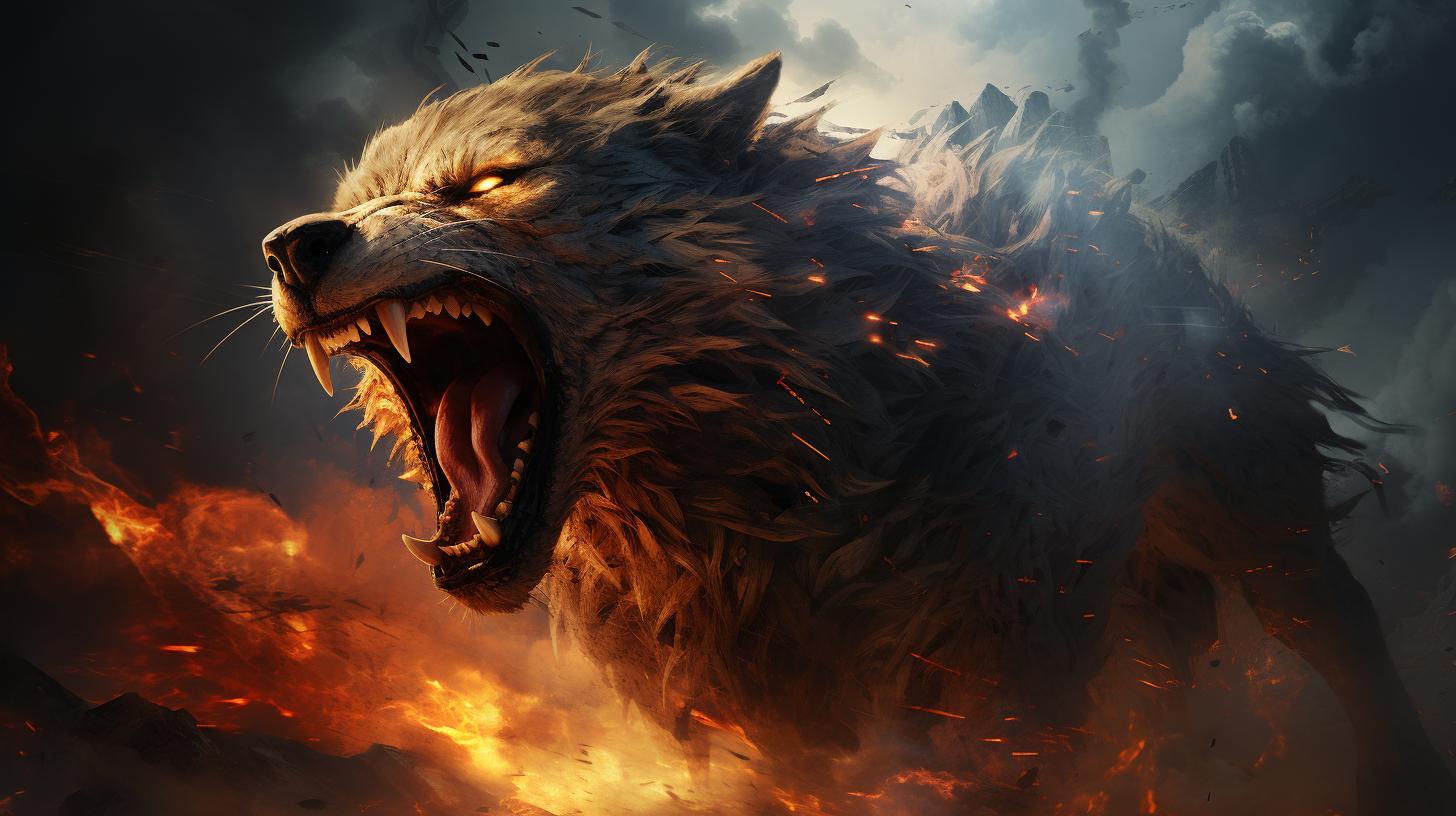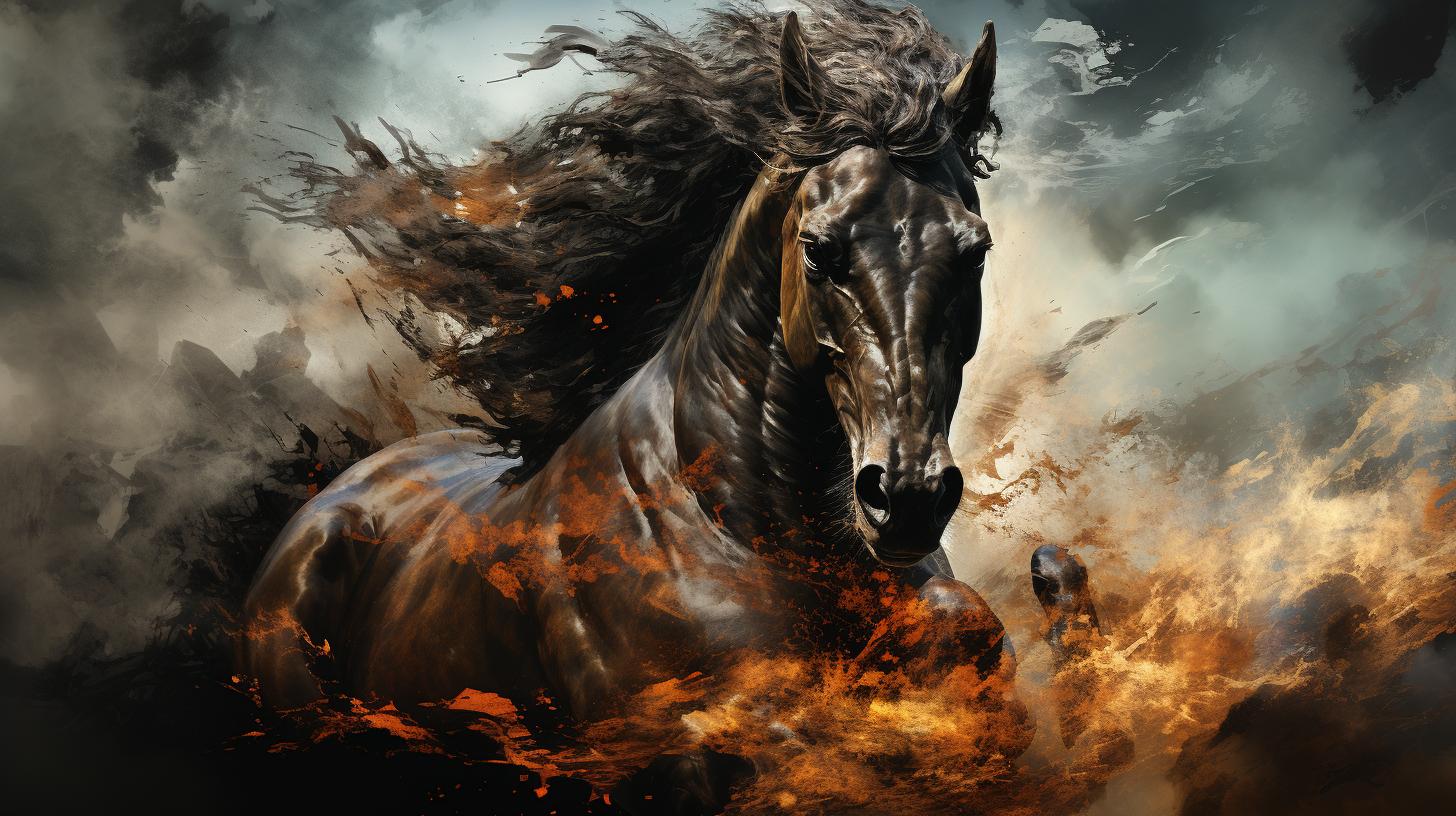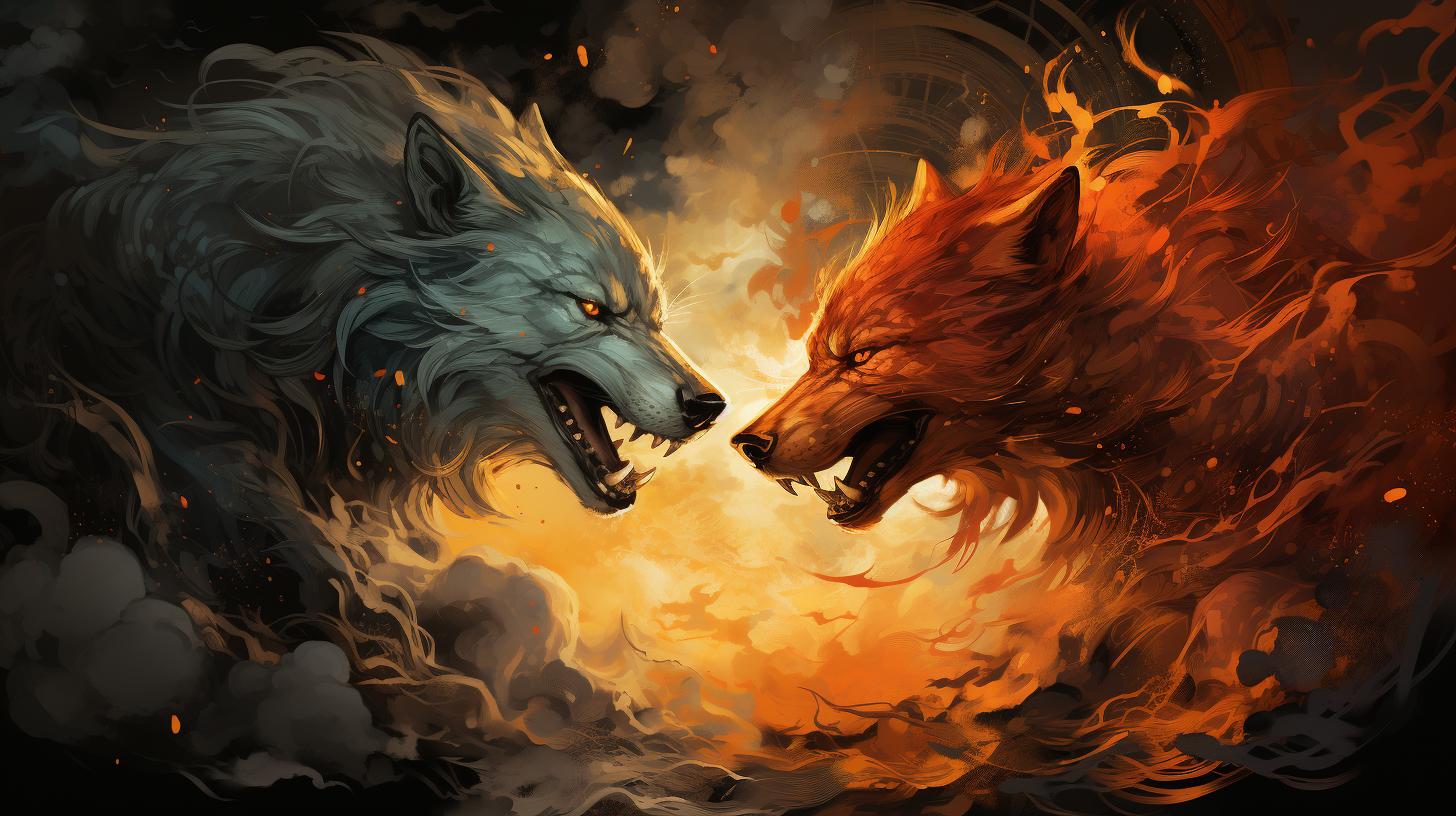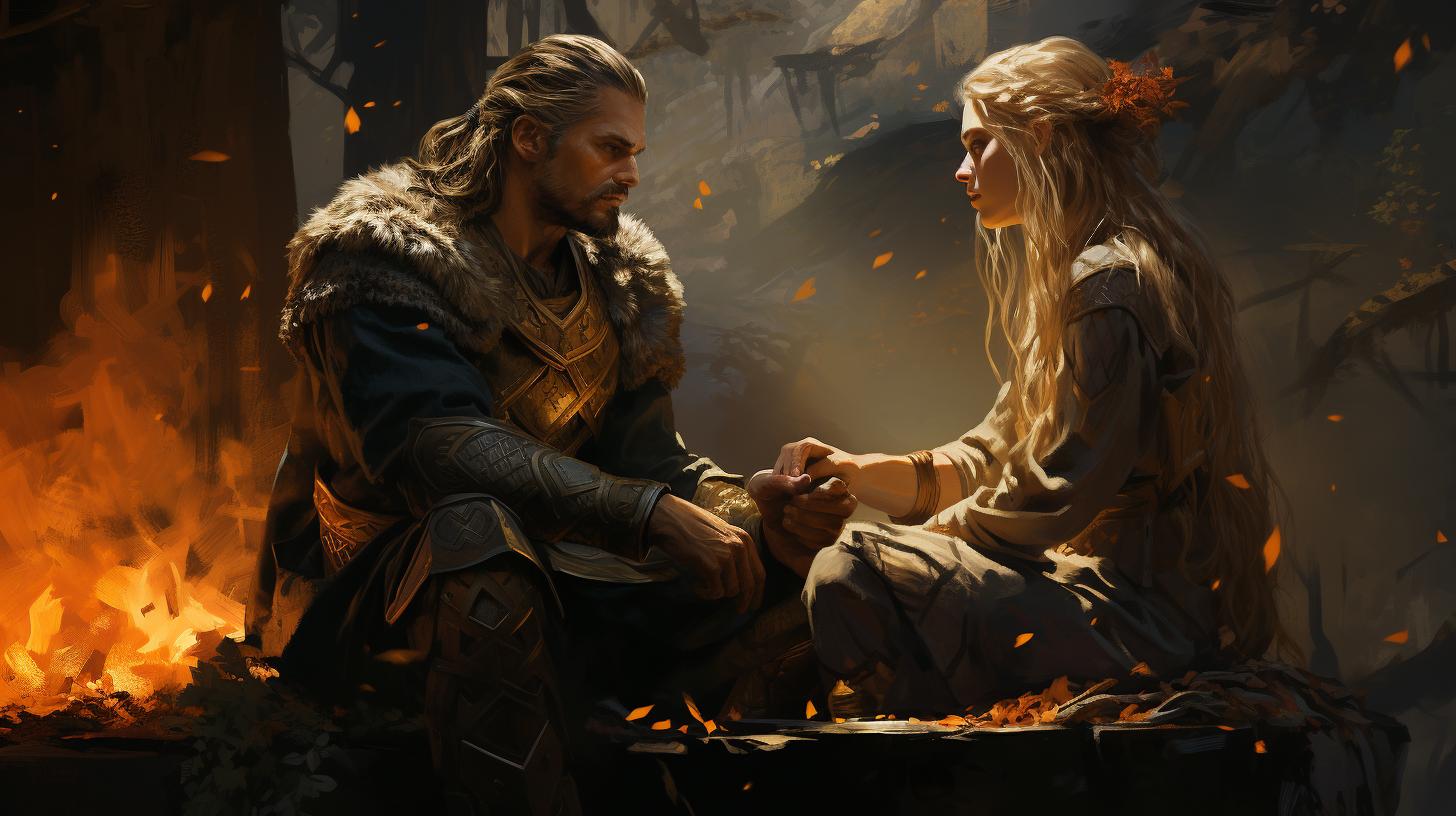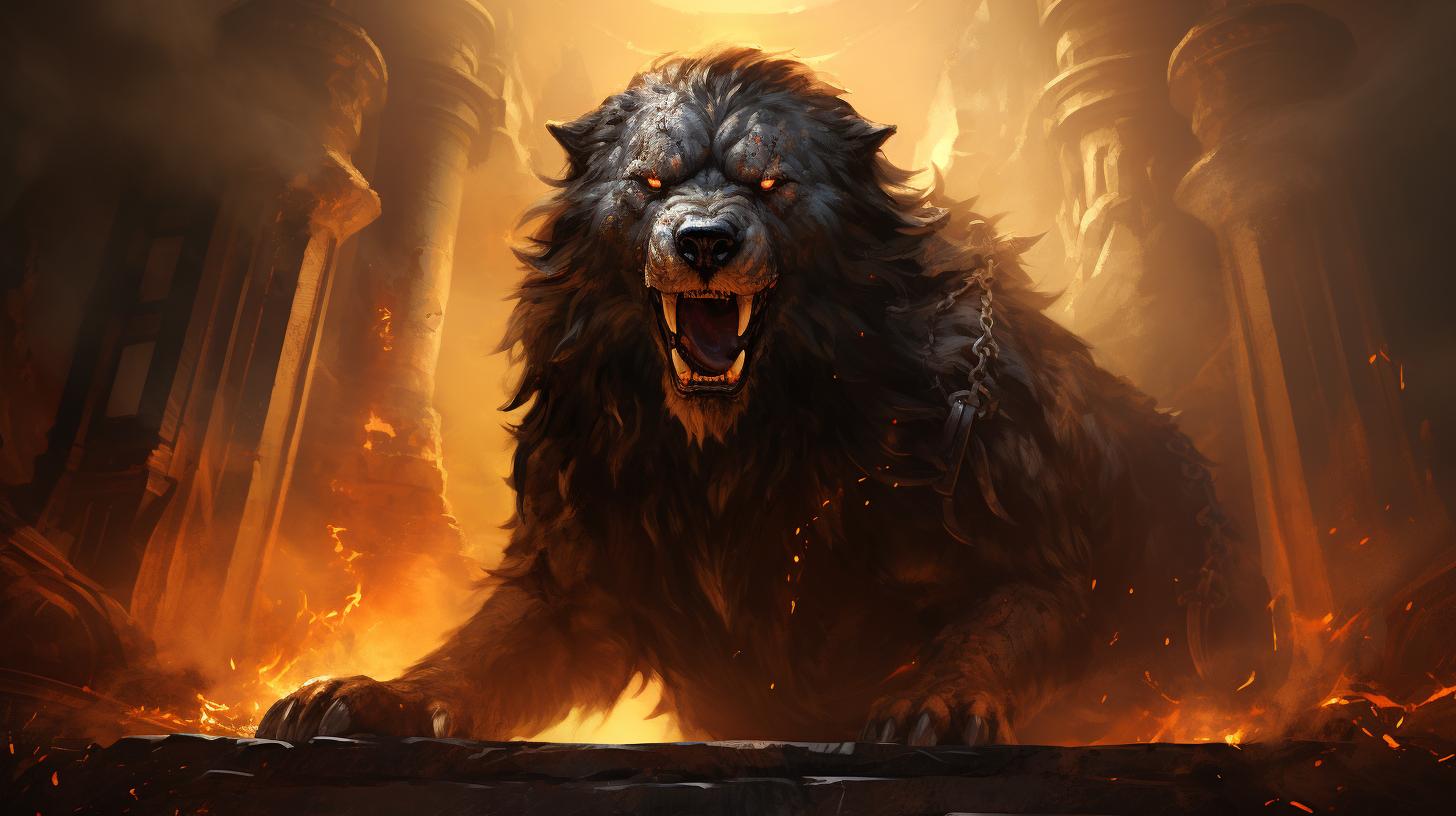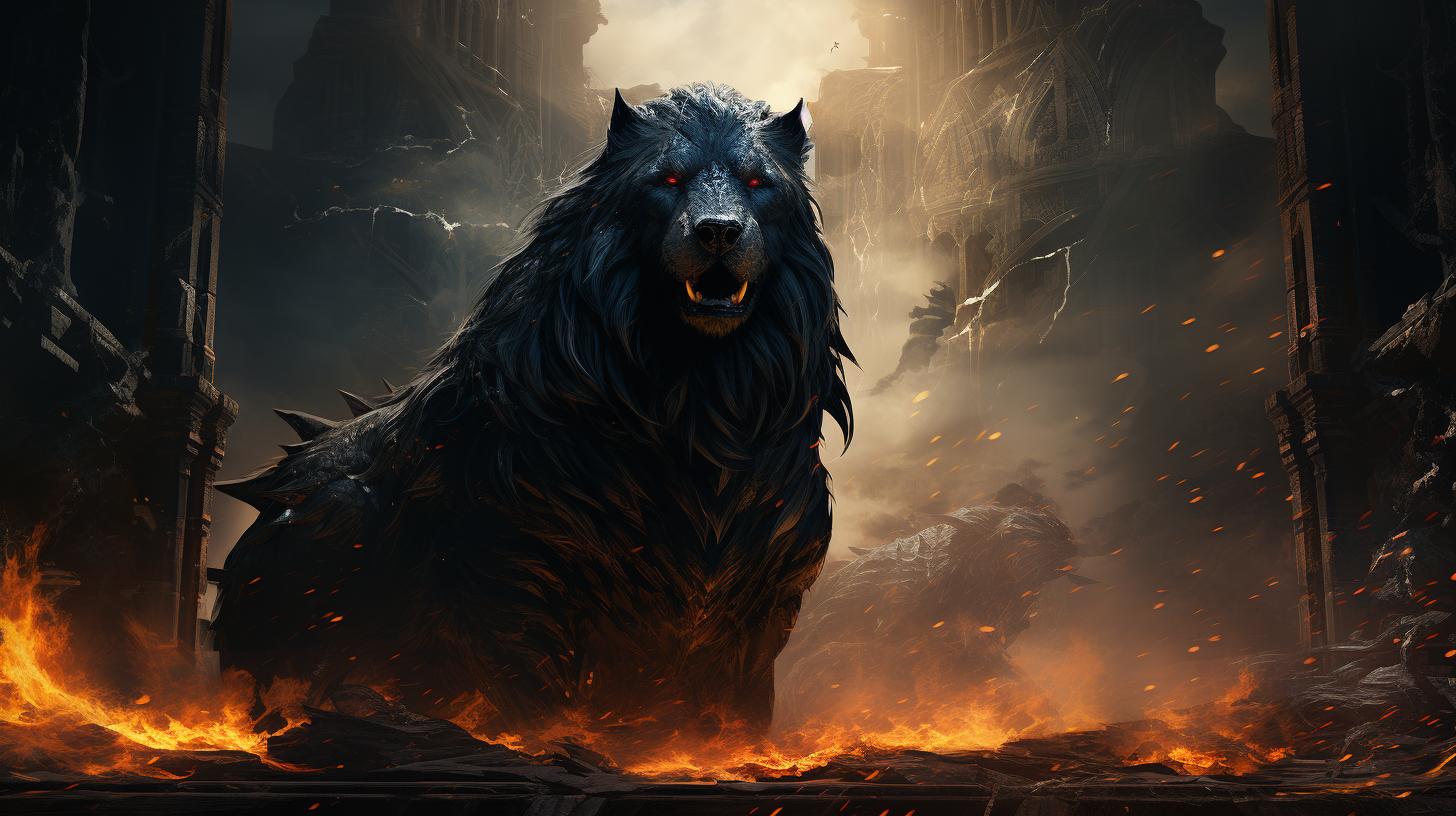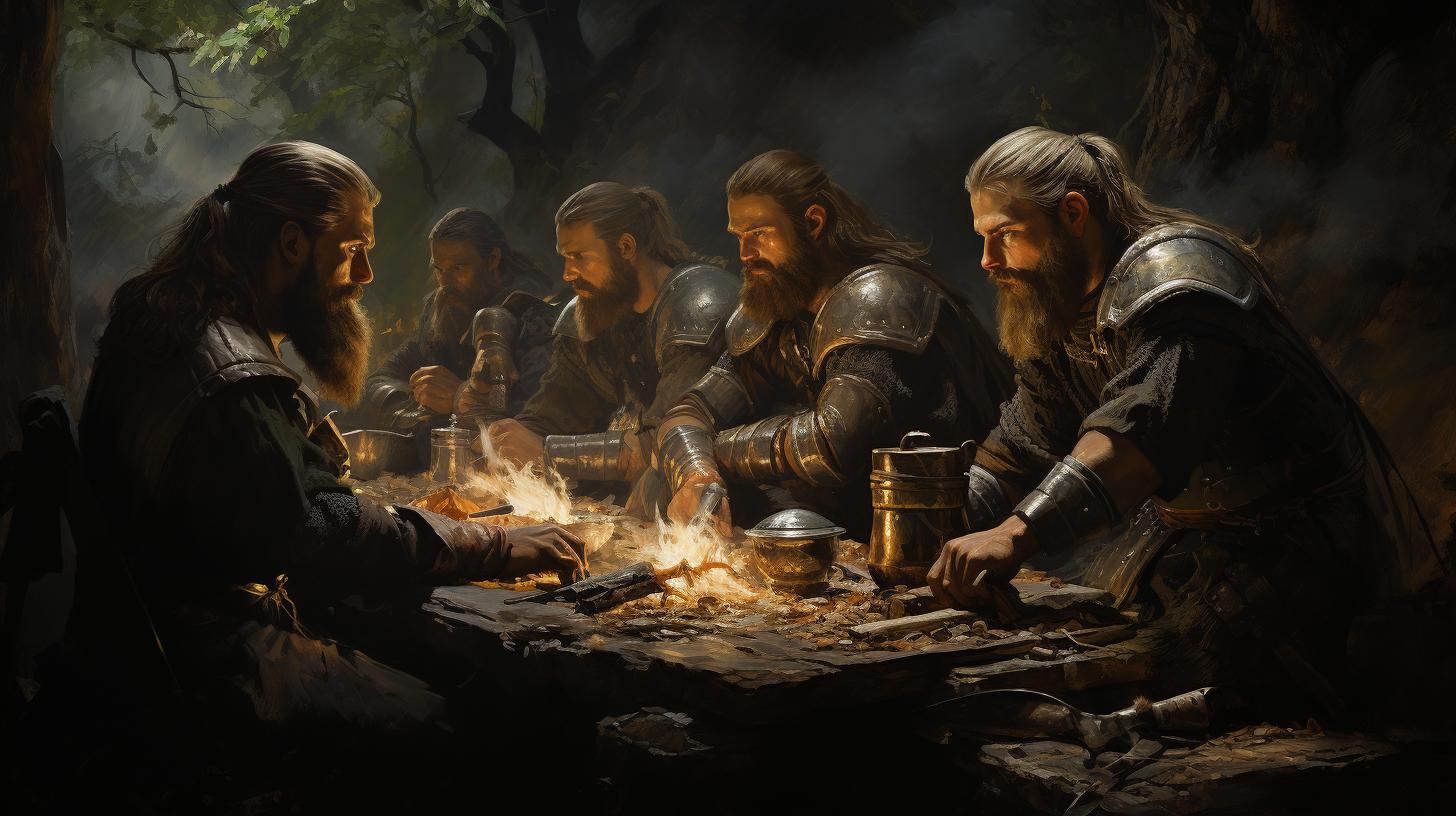Norse Mythology Jormungandr: The Mighty Serpent of Norse Legends
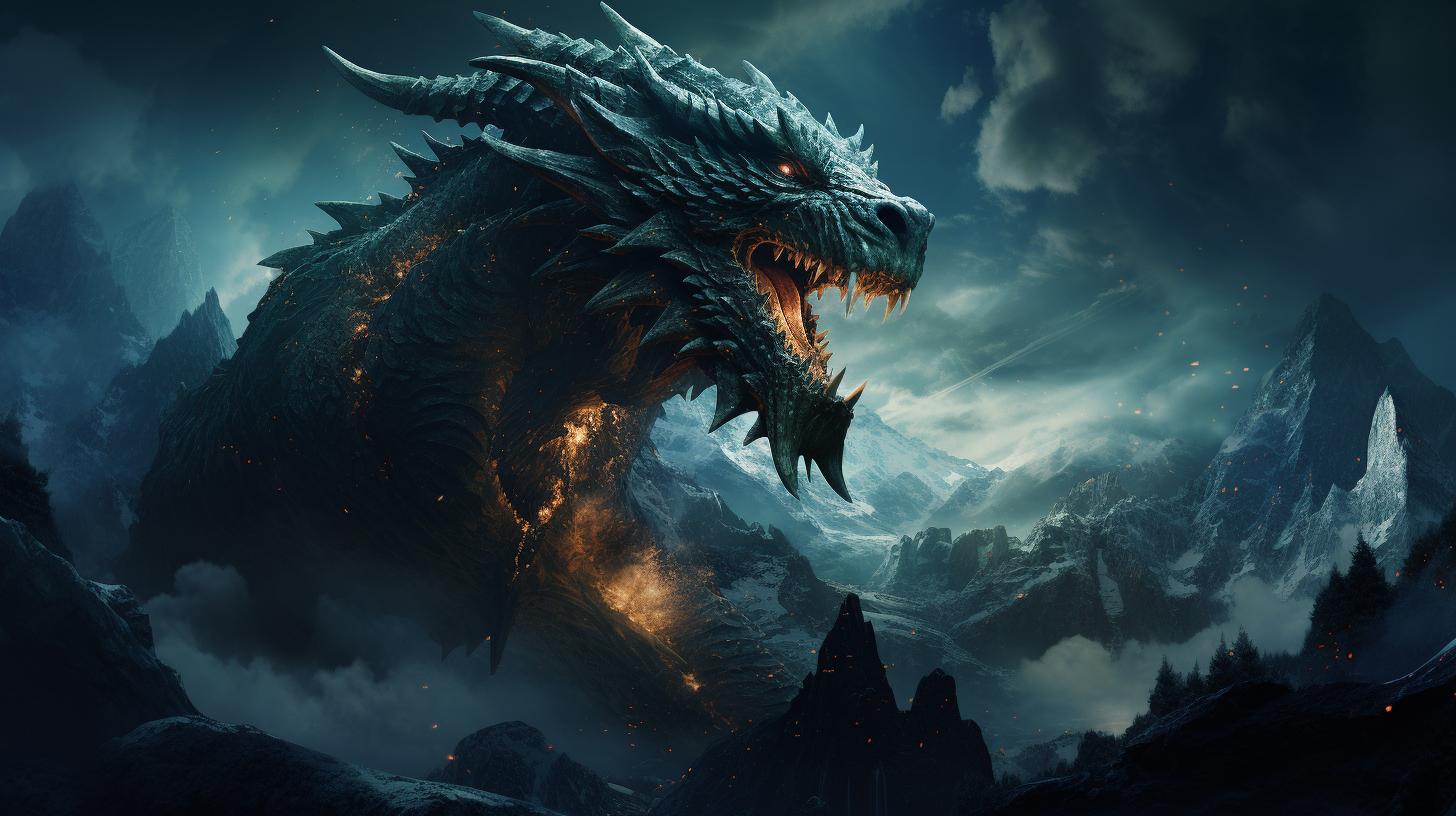
Jormungandr, also known as the World Serpent, is a prominent figure in Norse mythology. According to the Prose Edda, Jormungandr is one of the three children of Loki and Angrboda, and is depicted as a massive serpent that encircles the world.
In the myth of Ragnarok, Jormungandr plays a vital role, engaging in an epic battle against the thunder-god Thor. This powerful serpent holds significant symbolism as the embodiment of chaos and destruction.
Jormungandr’s legends have continued to captivate and inspire, even finding their place in modern culture through tattoos and various forms of artistic expression. Its influence remains enduring and intriguing.
The Origins of Jormungandr in Norse Mythology
In Norse mythology, Jormungandr is a fascinating creature whose origins are intertwined with the rich tapestry of Norse cosmology.
According to ancient texts such as the Prose Edda, Jormungandr is one of the three children of the trickster god Loki and the giantess Angrboda. Along with its siblings, Hel and Fenrir, Jormungandr plays a crucial role in the events leading up to Ragnarok, the cataclysmic battle that marks the end of the world.
Legend has it that Jormungandr was born in the realm of Jotunheim, the land of the giants. Its immense size and incredible strength quickly became apparent, as it grew to such proportions that it could encircle the entire world and grasp its own tail.
This unique form became its defining attribute, earning it the title of the World Serpent.
As a prominent figure in Norse mythology, Jormungandr is often associated with chaos and destruction. Its presence represents the precarious balance between order and disorder in the cosmos.
Some tales even depict Jormungandr as an eternal antagonist, challenging the gods and their quest to maintain harmony in the Nine Realms.
- The child of Loki and Angrboda
- Born in Jotunheim, the realm of the giants
- Grew to encircle the entire world
- Symbolizes chaos and destruction
- Challenges the gods in Norse mythology
As we delve deeper into the intricate mythology of Jormungandr, we begin to unravel the complexities of its origins and the profound significance it holds in Norse cosmology.
Exploring its role in the Prose Edda and its connection to other major figures such as Thor and Loki further deepens our understanding of this captivating creature.
The Role of Jormungandr in the Prose Edda
The Prose Edda, a collection of Old Norse myths and stories compiled by the Icelandic scholar Snorri Sturluson in the 13th century, provides valuable insight into the role of Jormungandr in Norse mythology.
Jormungandr is described as one of the three children of Loki and the giantess Angrboda. It is depicted as a gigantic serpent with a length so great that it encircles the entire world, grasping onto its own tail.
This portrayal highlights the immense power and significance of Jormungandr in the Norse cosmology.
In the Prose Edda, Jormungandr’s presence is primarily associated with the impending doom of Ragnarok, the cataclysmic battle that leads to the destruction and subsequent rebirth of the world.
According to the myth, during Ragnarok, Jormungandr will rise from the depths of the ocean, causing massive tidal waves and chaos.
Jormungandr’s role in Ragnarok is closely intertwined with its relationship to the thunder god Thor. The Prose Edda describes a fateful encounter between Thor and Jormungandr during a fishing trip, where Thor unknowingly tries to catch the serpent with a giant hook.
This event foreshadows their eventual confrontation in Ragnarok.
As the Prose Edda unfolds, it becomes evident that Jormungandr and Thor are archenemies destined to clash in an epic battle. During Ragnarok, Thor engages in a fierce duel with Jormungandr, resulting in their mutual demise.
Thor manages to slay the serpent, but not without being fatally poisoned by its venomous breath.
The role of Jormungandr in the Prose Edda serves as a powerful symbol of the cyclical nature of life and death, as well as the inevitable clash between order and chaos.
Its inclusion in these myths underscores the profound impact it had on Norse mythology and the rich tapestry of tales that continue to captivate audiences today.
Jormungandr and the Myth of Ragnarok
In Norse mythology, the myth of Ragnarok tells of the ultimate battle that brings about the end of the world.
At the center of this cataclysmic event is Jormungandr, the fearsome World Serpent. According to the ancient texts, Jormungandr is one of the three monstrous children of the god Loki and the giantess Angrboda.
As the myth goes, Jormungandr is destined to play a pivotal role in the battle between the gods and the giants.
When the time of Ragnarok arrives, the mighty serpent will rise from the depths of the oceans, spewing venom and causing massive destruction with its immense size and strength.
Jormungandr’s presence in the myth of Ragnarok represents chaos and the forces of destruction.
It is said that during the final battle, the serpent will engage in a fierce confrontation with the thunder god Thor. The clash between these powerful beings is foretold to be epic, with each inflicting fatal wounds upon the other.
Interestingly, Jormungandr and Thor share a tumultuous connection in Norse mythology. According to one account, during an ill-fated fishing trip, Thor once attempted to catch the World Serpent by using a powerful ox as bait.
This encounter showcases the constant struggle between these two archenemies, foreshadowing their destined confrontation in the apocalyptic events of Ragnarok.
The myth of Jormungandr and Ragnarok serves as a reminder of the cyclical nature of existence and the inevitable clash between order and chaos.
The terrifying presence of the World Serpent and its role in the final battle captivate the imagination, leaving a lasting impact on Norse mythology and its enduring legacy.
Thor’s Encounter with Jormungandr in the Fishing Trip
One of the most captivating tales in Norse mythology is the story of Thor’s encounter with Jormungandr during a fishing trip.
According to the ancient texts of the Prose Edda, the mighty thunder god devised a plan to test the strength of the colossal serpent.
Thor, accompanied by the trickster god Loki, embarked on a fishing expedition in the depths of the great ocean.
Using a powerful ox as bait, they cast their line into the vast waters, hoping to lure the monstrous Jormungandr out from the depths.
As they waited patiently, Jormungandr took the bait and bit onto the hook.
Sensing the serpent’s immense strength, Thor, determined to prove his own might, fiercely pulled on the line. The battle between the thunder god and the World Serpent commenced.
The struggle intensified as Jormungandr thrashed and writhed, causing tumultuous waves and violent storms.
The sheer force of their clash threatened to overturn their boat and plunge them into a watery abyss. Despite the danger, Thor refused to surrender, displaying his unwavering determination.
Unfortunately, this epic confrontation reached an impasse.
As Thor attempted to finish off the serpent with his trusty hammer, Mjolnir, the giant Hymir, who had provided the boat for the fishing trip, cut the line, fearing the catastrophic consequences of the battle.
Defeated but not discouraged, Thor and Jormungandr would meet again in an apocalyptic showdown during Ragnarok, the cataclysmic event that foretells the end of the world in Norse mythology. Their fate intertwines in a celestial clash that has captivated audiences for centuries.
The Symbolism of Jormungandr as the World Serpent
Jormungandr, also known as the World Serpent, holds significant symbolism in Norse mythology. Explore the profound meanings associated with this mighty creature:
- Power and Chaos: Jormungandr represents the immense power and chaos that exists in the world.
As the serpent encircles the earth, it symbolizes the vastness and unpredictability of the natural forces.
- Cycle of Life and Death: The serpent’s association with Ragnarok, the cataclysmic event marking the end and rebirth of the world, signifies the cyclical nature of life and death.
Jormungandr’s presence reinforces the inevitable cycle of destruction and creation.
- Boundaries and Protection: Jormungandr acts as a protective barrier, encircling Midgard, the realm of humans. Its presence serves as a boundary between the chaos of the outer realms and the human world, signifying the serpent’s role in preserving order.
- Unity and Interconnectedness: Jormungandr’s physical connection to the world emphasizes the interconnectedness of all things.
It highlights the notion that all beings and elements within the Norse cosmology are intertwined, representing the holistic nature of existence.
- Opposition and Struggle: Jormungandr’s eternal rivalry with Thor exemplifies the complex relationship between opposing forces.
Their ongoing battle symbolizes the struggle between order and chaos, offering insights into the constant conflict present in life.
Understanding the symbolism behind Jormungandr enriches our appreciation for Norse mythology and its profound insights into the human condition.
This powerful symbol continues to captivate and inspire individuals in various forms of art and cultural expressions.
Jormungandr and Loki’s Connection in Norse Mythology
In Norse mythology, Jormungandr, the mighty World Serpent, shares a compelling connection with Loki, the trickster god. This connection is rooted in their shared parentage as children of the jötunn Angrboda. Jormungandr, along with its siblings Hel and Fenrir, represents the chaos and unpredictability present in the Norse pantheon.
Loki, known for his shapeshifting abilities and mischievous nature, forms a unique bond with Jormungandr. It is said that Loki, aware of the serpent’s potential for destruction and its role in Ragnarok, takes a special interest in raising Jormungandr.
This turbulent relationship between Loki and Jormungandr transcends mere familial ties and signifies a deeper connection through their shared destiny.
As the myths unfold, Loki’s involvement with Jormungandr becomes even more intriguing.
It is prophesied that during Ragnarok, the apocalyptic battle marking the end of the world, Jormungandr and Thor, the god of thunder, will engage in a climactic duel. In a curious twist, Loki himself will fiercely battle alongside Jormungandr against the forces of Asgard, showcasing the complexities of their relationship.
The dynamics between Loki and Jormungandr epitomize the intertwining themes of fate, kinship, and the cyclical nature of Norse mythology. Their connection offers a glimpse into the intricate web of relationships within the pantheon, highlighting the juxtaposition of order and chaos that defines the Norse cosmology.
The Battle Between Jormungandr and Thor in Ragnarok
The epic battle between Jormungandr, the fearsome World Serpent, and Thor, the mighty god of thunder, is one of the most significant events in Norse mythology. In the prophecy of Ragnarok, the apocalyptic end of the world, these two powerful adversaries are destined to face each other in a final clash of titans.
According to the myths, Thor and Jormungandr have long been archenemies. Jormungandr, the child of Loki and the giantess Angrboda, grew so immense that it encircled the entire world.
Its enormous size and strength posed a threat to the gods of Asgard, including Thor.
In the fishing trip tale, Thor disguised himself as a common traveler and, with the help of the cunning giant Hymir, sought to defeat Jormungandr once and for all.
As they sailed into the vast ocean, Thor cast his fishing line with a massive ox head as bait, aiming to lure the serpent from the depths.
When Jormungandr took the bait, a fierce and violent battle ensued.
The serpent, with its gargantuan strength, thrashed, coiled, and fiercely attacked Thor’s boat. Despite the incredible power of both adversaries, Thor managed to strike Jormungandr with his mighty hammer, Mjolnir, causing the serpent to release venom that threatened to poison the whole world.
The battle between Thor and Jormungandr in Ragnarok is said to be fierce and cataclysmic, representing the struggle between order and chaos, and ultimately leading to the destruction and rebirth of the world.
In this apocalyptic clash, Thor is destined to kill Jormungandr, but not without sustaining a fatal blow from the serpent.
This epic battle serves as a testament to the immense power and significance of Jormungandr in Norse mythology.
It symbolizes the eternal conflict between the forces of good and evil, and the heroic acts of gods who defend the realms against the inevitable chaos of Ragnarok.
Legends and Tales Involving Jormungandr in Norse Mythology
Within the vast realm of Norse mythology, Jormungandr, also known as the World Serpent, is the subject of numerous captivating legends and tales.
These stories showcase the significance of Jormungandr in the rich tapestry of Norse folklore.
One such tale tells of the creation of Jormungandr by the god Loki and the giantess Angrboda. Born as one of the monstrous offspring of this ill-fated union, Jormungandr grew to a colossal size and became a menacing force in the cosmos.
Jormungandr’s most famous legend involves its role in the apocalyptic event known as Ragnarok. According to the myth, during this cataclysmic battle, Jormungandr would rise from the depths of the ocean, joining forces with other formidable creatures to confront the gods, particularly the thunder-god Thor.
The epic confrontation between Thor and Jormungandr is one of the most gripping tales in Norse mythology.
With his immense strength and hammer, Thor valiantly battles the World Serpent, but ultimately meets his demise, succumbing to Jormungandr’s venomous bite. This fatal encounter signifies the cyclical nature of life and death, as well as the inevitable clash of cosmic forces.
Alongside its role in Ragnarok, Jormungandr weaves its influence through various other Norse myths. It is often depicted as a symbol of chaos, representing the primal forces that existed before the order established by the gods.
Additionally, Jormungandr’s immense size and power make it a potent symbol of primal natural forces, embodying the untamed and unpredictable aspects of the natural world.
Though Jormungandr is a significant figure in ancient Norse legends, its influence extends far beyond the realm of mythology.
In modern culture, Jormungandr continues to captivate and inspire artists, writers, and enthusiasts. Its depiction in tattoos and other forms of artistic expression serves as a reminder of the enduring power of Norse mythology and the fascinating allure of the World Serpent.
Jormungandr Tattoos: Symbolism and Meaning
Jormungandr, the mighty World Serpent of Norse mythology, has captivated the imagination of many with its mysterious and awe-inspiring presence. As a result, Jormungandr tattoos have become increasingly popular among those who seek to embrace the symbolism and meaning associated with this legendary creature.
The symbolism behind Jormungandr tattoos is vast and profound, reflecting the serpentine nature of the creature itself. Here are some key interpretations:
- Power and Strength: Jormungandr represents immense power and strength, as it is one of the most formidable beings in Norse mythology.
The tattoo serves as a constant reminder of the wearer’s own inner strength and resilience.
- Eternal Cycle: The eternal cycle of life and death is often associated with Jormungandr. The tattoo can symbolize the cyclical nature of existence and the eternal flow of time.
- Connection to Nature: Jormungandr’s connection to the natural world is reflected in tattoos that incorporate elements of the earth, such as trees, mountains, or water.
These tattoos emphasize the harmony between humanity and the environment.
- Guardian and Protector: Jormungandr’s role as a guardian and protector is embraced by those who see themselves as defenders of their loved ones or important causes.
Such tattoos can signify a person’s commitment to safeguarding what they hold dear.
- Resilience and Adaptability: Just as Jormungandr adapts and thrives amidst chaos, tattoos incorporating the serpent can represent the wearer’s ability to adapt and overcome challenges in life.
When getting a Jormungandr tattoo, it is important to work closely with a skilled artist who is familiar with Norse mythology symbolism.
They can help bring the intricate details of the World Serpent to life, ensuring that the tattoo captures the desired essence and meaning.
Whether one chooses a small and discreet Jormungandr tattoo or a larger, more complex design, it is a powerful symbol that pays homage to the rich mythology of the Norse culture.
With its deep symbolism and profound meaning, a Jormungandr tattoo serves as a timeless reminder of the strength, resilience, and connection to nature that resides within the wearer.
The Influence of Jormungandr in Modern Culture
Jormungandr, the powerful World Serpent of Norse mythology, has had a significant impact on modern culture.
Its symbolism and legendary tales continue to inspire various forms of art, literature, and entertainment.
- Literature: Many authors have drawn inspiration from Norse mythology, incorporating Jormungandr into their works. These literary pieces often explore the theme of chaos and destruction, reflecting the serpent’s role as a symbol of disruption in Norse mythology.
- Art and Tattoos: Jormungandr’s image has become a popular motif in various forms of artwork, particularly tattoos.
The serpent’s coiled body and fierce appearance make for striking visual designs, often representing strength, power, and the allure of the unknown.
- Films and Television: Norse mythology, including Jormungandr, has been featured in movies and TV shows, captivating audiences with epic battles and mythological storytelling.
The serpent’s portrayal in visual media ranges from realistic depictions to more fantastical interpretations.
- Video Games: Jormungandr has made appearances in numerous video games, both as a main antagonist and as a mythological creature to be encountered and defeated.
These games offer players the opportunity to immerse themselves in the rich mythology and epic battles of Norse legends.
- Music and Heavy Metal: Norse mythology, with Jormungandr at its core, has influenced various musical genres, particularly heavy metal.
Many bands draw inspiration from Norse mythology, incorporating themes of ancient gods and epic tales into their lyrics and imagery.
The enduring fascination with Jormungandr in modern culture speaks to the timeless allure of Norse mythology.
Its impact can be seen in a wide range of artistic expressions, capturing the imagination and curiosity of people around the world.
.











